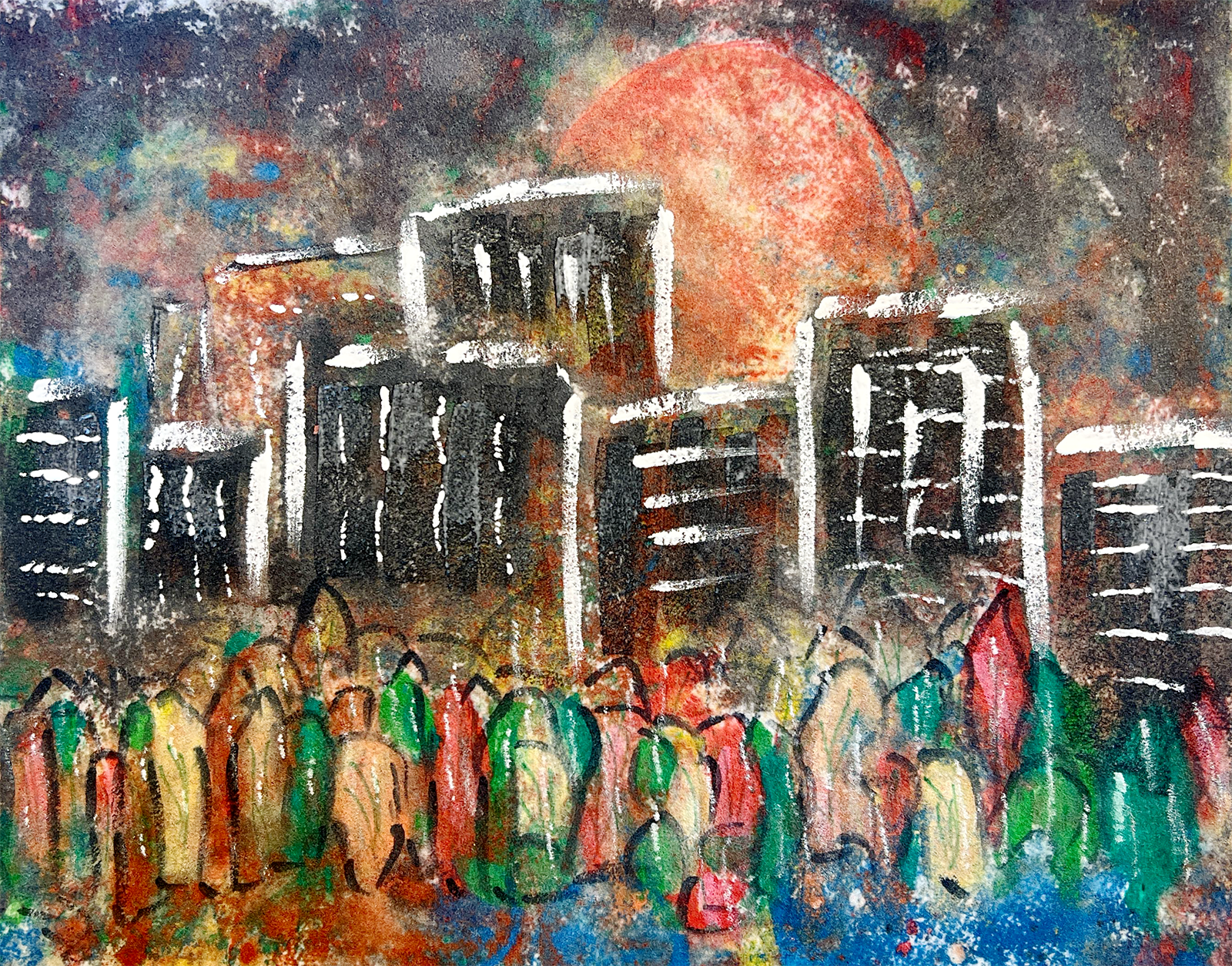Clay & Pigment at the Out Door Country Club
“City’s Edge,” — Clay monoprint, watercolor, watercolor pencil, and acrylic work © Andrew T. Smith of Visual Realia, LLC.
There is little as tied to the Earth as clay. Feldspar in the rocks from Earth's crust weathers and erodes over long periods, eventually reacting with water to form the unique minerals in clay. When wet, clay achieves plasticity, allowing it to be shaped, but it becomes hard when dried or heated (fired) at high temperatures.
Prehistoric humans discovered easy access to clay and its unique qualities, with pottery shards found (Honshu, Japan) that date to 14,000 BC. Clay was also amongst the earliest materials to be written on, inscribed using blunt reeds. Clay bricks allowed the construction of a growing civilization's necessary structures.
Clay was used for vessels and storage containers necessary as humans evolved. Over time, decorations were added to these clay works, and eventually, clay was used to create expressive pieces that had no functional use. There was a very early and robust connection between clay and art.
Pennsylvanian Mitch Lyons studied both printmaking and clay arts; his genuinely unique approach married elements of each. The artist designed a work using handmade colored clay slips (very wet clays resembling house paint, generally colored by the artist with universal pigments) on a large slab of stoneware clay known as the matrix. Next, polyester fabric/material is placed on the slab, and pressure is applied to transfer the design to create a one-of-a-kind print: a clay monoprint.
The artists designs or paints on the clay slab (matrix) with colored clay slip.
As an added twist, the common tradition is the next design is created on top of the remnants of the last. When the print is made, known as pulling the print, not only is the new design transferred, but random elements of previous designs are also often also transferred. While the artist certainly creates the work, they do so without complete control of the outcome.
Because the medium is relatively young, a lot of experimenting is involved. The monoprint works in the "Clay & Pigment" exhibit at the Out Door Country Club are the results of such experiments and the creative use of these expressive techniques. They are shown along with the artist's photography works. Creative York organizes and curates the exhibit series.
You can learn more about Andrew Smith's clay monoprints on his website: www.visualrealia.com.
Visitors to the opening of “Clay & Pigment” at the Out Door Country Club in York, Pennsylvania.
The "Clay & Pigment" exhibit at the Out Door Country Club is named after the colorants that give the artwork vibrancy. It runs from May 13th through July 6th. For inquiries regarding the exhibit or the visual works, contact Andrew Smith.
Clay & Pigment
Out Door Country Club
May 13 - July 13, 2024
1157 Detwiler Drive, York, PA
Curated by Creative York
After a 32-year career as a music teacher in Perry County, Andy Smith operates Visual Realia, a clay monoprint studio.
2022 marked the creation of Culture On The Line, an online home documenting the area’s cultural highlights, creators, and artists. The following year brought the opportunity to create the Gallery at the Old Post Office and curate exhibits featuring regional artists throughout the year. Other projects include working as an arts “navigator” to aid creative entrepreneurs with the grant writing process.
Andy has been active in the community through service on several nonprofit boards. His other interests include photography, wildflower gardening, food, his various communities, and the occasional pun. Read more here.
All works copyright
by Andrew T. Smith and/or
Visual Realia, LLC



























